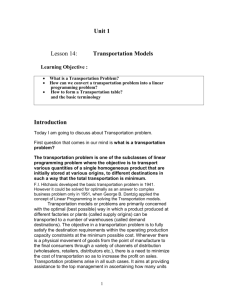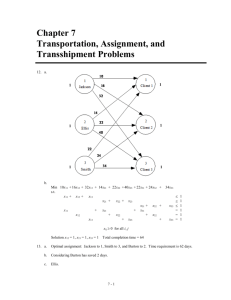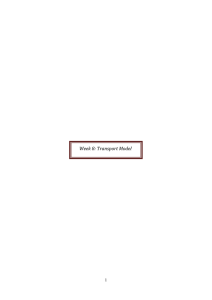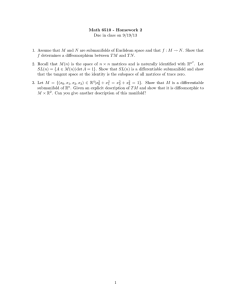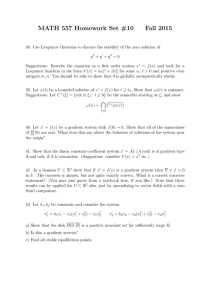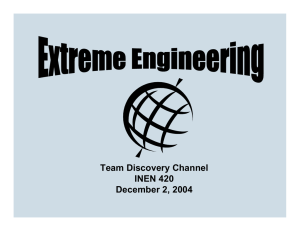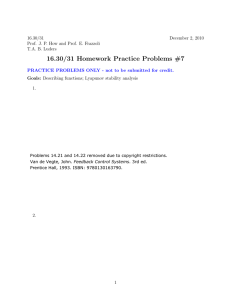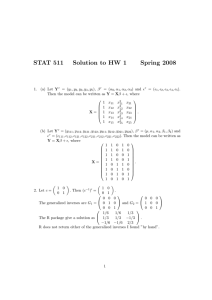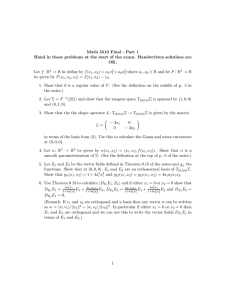Document 13378264
advertisement
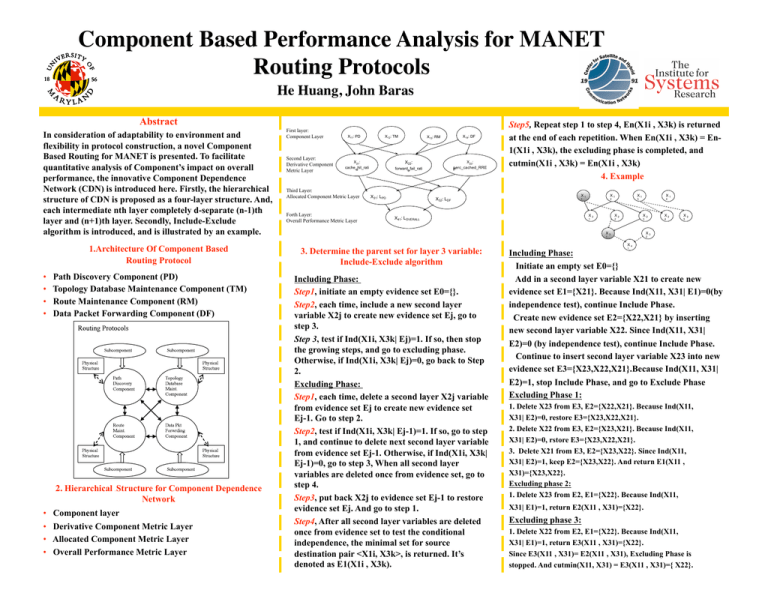
Component Based Performance Analysis for MANET
Routing Protocols
He Huang, John Baras Abstract
In consideration of adaptability to environment and
flexibility in protocol construction, a novel Component
Based Routing for MANET is presented. To facilitate
quantitative analysis of Component’s impact on overall
performance, the innovative Component Dependence
Network (CDN) is introduced here. Firstly, the hierarchical
structure of CDN is proposed as a four-layer structure. And,
each intermediate nth layer completely d-separate (n-1)th
layer and (n+1)th layer. Secondly, Include-Exclude
algorithm is introduced, and is illustrated by an example.
1.Architecture Of Component Based
Routing Protocol
• • • • Path Discovery Component (PD)
Topology Database Maintenance Component (TM)
Route Maintenance Component (RM)
Data Packet Forwarding Component (DF)
2. Hierarchical Structure for Component Dependence
Network
.
‘
• • • • Component layer
Derivative Component Metric Layer
Allocated Component Metric Layer
Overall Performance Metric Layer
First layer:
Component Layer
Second Layer:
Derivative Component
Metric Layer
X11: PD
X12: TM
X22:
X21:
cache_hit_rati
o
Third Layer:
Allocated Component Metric Layer
Forth Layer:
Overall Performance Metric Layer
X13: RM
X23:
perc_cached_RRE
P
forward_fail_rati
o
X31: LPD
X14: DF
X32: LDF
Step5, Repeat step 1 to step 4, En(X1i , X3k) is returned
at the end of each repetition. When En(X1i , X3k) = En1(X1i , X3k), the excluding phase is completed, and
cutmin(X1i , X3k) = En(X1i , X3k)
4. Example
X1
X2
1
X1
3
2
X2
X41: LOVERALL
X1
X1
1
4
X2
2
3
X3
Including Phase:
Step1, initiate an empty evidence set E0={}.
Step2, each time, include a new second layer
variable X2j to create new evidence set Ej, go to
step 3.
Step 3, test if Ind(X1i, X3k| Ej)=1. If so, then stop
the growing steps, and go to excluding phase.
Otherwise, if Ind(X1i, X3k| Ej)=0, go back to Step
2.
Excluding Phase:
Step1, each time, delete a second layer X2j variable
from evidence set Ej to create new evidence set
Ej-1. Go to step 2.
Step2, test if Ind(X1i, X3k| Ej-1)=1. If so, go to step
1, and continue to delete next second layer variable
from evidence set Ej-1. Otherwise, if Ind(X1i, X3k|
Ej-1)=0, go to step 3, When all second layer
variables are deleted once from evidence set, go to
step 4.
Step3, put back X2j to evidence set Ej-1 to restore
evidence set Ej. And go to step 1.
Step4, After all second layer variables are deleted
once from evidence set to test the conditional
independence, the minimal set for source
destination pair <X1i, X3k>, is returned. It’s
denoted as E1(X1i , X3k).
4
X2
5
X3
1
3. Determine the parent set for layer 3 variable:
Include-Exclude algorithm
X2
2
X4
1
Including Phase:
Initiate an empty set E0={}
Add in a second layer variable X21 to create new
evidence set E1={X21}. Because Ind(X11, X31| E1)=0(by
independence test), continue Include Phase.
Create new evidence set E2={X22,X21} by inserting
new second layer variable X22. Since Ind(X11, X31|
E2)=0 (by independence test), continue Include Phase.
Continue to insert second layer variable X23 into new
evidence set E3={X23,X22,X21}.Because Ind(X11, X31|
E2)=1, stop Include Phase, and go to Exclude Phase
Excluding Phase 1:
1. Delete X23 from E3, E2={X22,X21}. Because Ind(X11,
X31| E2)=0, restore E3={X23,X22,X21}.
2. Delete X22 from E3, E2={X23,X21}. Because Ind(X11,
X31| E2)=0, rstore E3={X23,X22,X21}.
3. Delete X21 from E3, E2={X23,X22}. Since Ind(X11,
X31| E2)=1, keep E2={X23,X22}. And return E1(X11 ,
X31)={X23,X22}.
Excluding phase 2:
1. Delete X23 from E2, E1={X22}. Because Ind(X11,
X31| E1)=1, return E2(X11 , X31)={X22}.
Excluding phase 3:
1. Delete X22 from E2, E1={X22}. Because Ind(X11,
X31| E1)=1, return E3(X11 , X31)={X22}.
Since E3(X11 , X31)= E2(X11 , X31), Excluding Phase is
stopped. And cutmin(X11, X31) = E3(X11 , X31)={ X22}.
